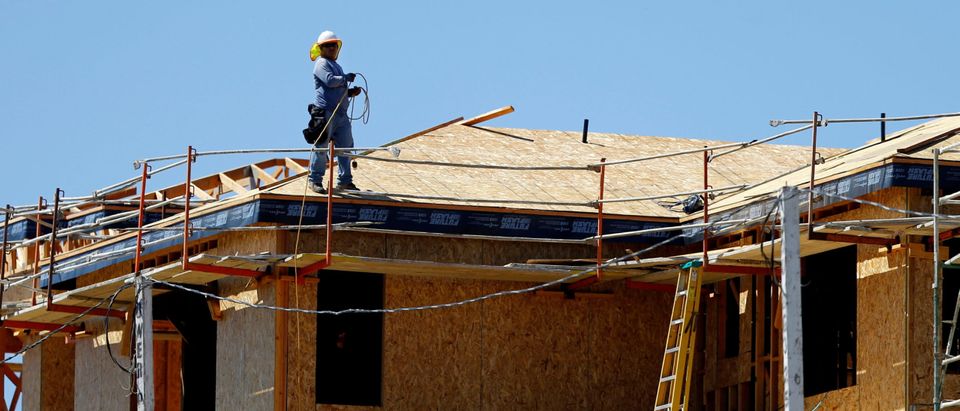Privately-owned housing starts, which represents the start of construction on new privately-owned houses, fell 9.6% from June to July, a major warning sign for the distressed housing market, according to data released by the U.S. Census Bureau and Department of Housing and Urban Development (HUD) Tuesday.
Single-family housing starts sank even lower, at 10.1% below June levels, while single‐family authorizations, or approved construction permits, in July fell 4.3% compared to June. Moreover, the National Association of Home Builders (NAHB)/Wells Fargo Housing Market Index, which measures sentiment of home builders towards the housing market, fell for the 8th straight month, to 49 out of 100, according to data from the NAHB.
A score below 50 is considered negative, and is the first time the score has gone negative since a two-month dip in April and May 2020 during the coronavirus pandemic, before which the most recent negative score was June 2014, CNBC reported.
“Given the context that all these indicators are pointing in the wrong direction, I am confident that the latest Census Bureau report on new residential construction [is] not a statistical fluke but an established trend downward,” E.J. Antoni, research fellow for regional economics in the Center for Data Analysis at The Heritage Foundation, told the Daily Caller News Foundation. “At this point, the Federal Reserve’s failure to liquidate its Mortgage-Backed Securities might be the only thing propping up the housing market.”
The NAHB “index has declined every month this year, is down 40% from its December level, and is now in contraction territory,” Antoni told the DCNF.
Housing has gotten increasingly difficult to afford, with the median price of a house increasing every month since September 2021 from $361,000 to $423,300 in June, according to data from the National Association of Realtors (NAR). However, despite this nearly 17% increase in the median cost of a home, the qualifying yearly income for such a home has skyrocketed from $58,176 to $93,312, a 60.4% increase, the NAR data reveals.
Privately-owned housing starts were down 8.1% year-on-year in July, according to the Census Bureau report. Despite increased costs for land, labor and materials, about 1 in 5 builders opted to lower prices by an average of 5% in order to retain or attract customers, CNBC reported.
National median prices rose 14.2% year over year to $413,500, rising above $400,000 for the first time. https://t.co/L4hALALZ40
— NAR Research (@NAR_Research) August 17, 2022
Mortgage rates fell in 2020 during the pandemic, which led to massive demand while simultaneously disincentivizing the listing of houses, driving up prices, the Motley Fool reported recently. For a consumer at the U.S. median income of $67,521, a typical mortgage would take up 30.7% of yearly income, according to the Motley Fool.
The Motley Fool does not use median home prices to determine this, but rather a “typical” price based on Zillow’s Home Value Index which is weighted to account for changes in the housing market.
The margin of error on the Census Bureau’s data was significant, at 8.6% with a 90% confidence interval, indicating that the precise value of 9.6% may not be accurate, according to the Census Bureau’s monthly report on residential construction. However, Antoni told the DCNF that the data was useful for establishing trends, and when comparing to other data sets.
“[W]e are actively pursuing new methodologies to improve the housing starts data and lower margins of error (while not increasing burden or cost), including leveraging data science techniques and satellite imagery,” a Census Bureau spokesperson told the DCNF.
All content created by the Daily Caller News Foundation, an independent and nonpartisan newswire service, is available without charge to any legitimate news publisher that can provide a large audience. All republished articles must include our logo, our reporter’s byline and their DCNF affiliation. For any questions about our guidelines or partnering with us, please contact licensing@dailycallernewsfoundation.org.












